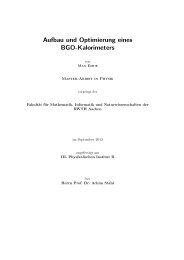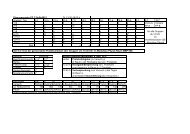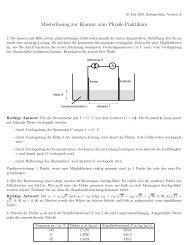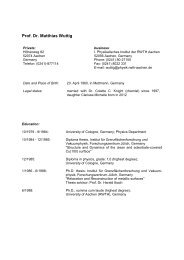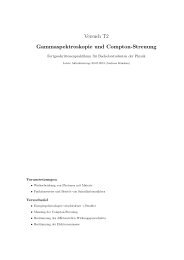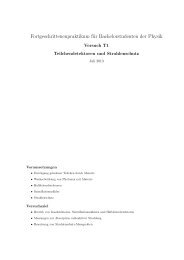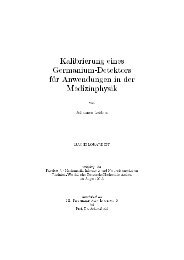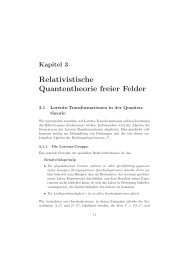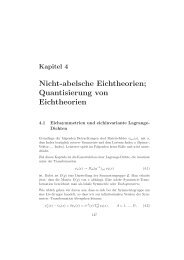Workshop book - Physikzentrum der RWTH Aachen - RWTH Aachen ...
Workshop book - Physikzentrum der RWTH Aachen - RWTH Aachen ...
Workshop book - Physikzentrum der RWTH Aachen - RWTH Aachen ...
You also want an ePaper? Increase the reach of your titles
YUMPU automatically turns print PDFs into web optimized ePapers that Google loves.
Posters Tuesday February 5<br />
Poster 28:<br />
Explicit staggered grid finite difference scheme for (2+1)D Dirac fermions<br />
René Hammer<br />
We study the dynamics of Dirac fermion wave packets on magnetically structured<br />
surfaces of topological insulators and propose a gate-controlled Dirac<br />
fermion interferometer based on a solitonic domain wall structure which functions<br />
as a transistor. A preliminary summary of related work can be found<br />
online (arXiv:1205.6941). Work supported by FWF Project P21289-N16<br />
We discuss and compare several algorithms for a numerical solution of the<br />
time-dependent Dirac equation in 2 spatial dimensions which allow the use of<br />
a finite simulation region for open boundary situations. The newly proposed<br />
explicit finite difference schemes use space and time staggering of the grid,<br />
showing a computational complexity growing only linearly with the number<br />
of space-time grid-points. One of them preserves the linear dispersion relation<br />
of the Weyl equation for wave vectors aligned with the grid and yields only<br />
one additional Dirac cone. The second scheme leads to a purely monotonic<br />
free-particle dispersion avoiding an additional cone altogether. We discuss the<br />
energy dispersion relation, the proof of stability, a definition of the norm on<br />
the staggered grid, and the important issue of absorbing boundary conditions.<br />
These schemes are useful for numerical studies of Dirac fermions on topological<br />
insulators, where the surface state energy spectrum can be m! anipulat ed<br />
by perturbations which break time-reversal symmetry introducing an energy<br />
gap. Work supported by FWF Project P21289-N16<br />
René Hammer, Christian Ertler, and Walter Pötz<br />
Poster 29:<br />
Microwave-controlled manipulation of Majorana bound states<br />
Thomas Schmidt<br />
Majorana bound states have been proposed as building blocks for qubits on<br />
which certain operations can be performed in a topologically protected way<br />
using braiding. However, the set of these protected operations is not sufficient<br />
to realize universal quantum computing. We show that the electric field in<br />
a microwave cavity can induce Rabi oscillations between adjacent Majorana<br />
bound states. These oscillations can be used to implement an additional<br />
single-qubit gate. Supplemented with one braiding operation, this gate allows<br />
to perform arbitrary single-qubit operations.<br />
77





